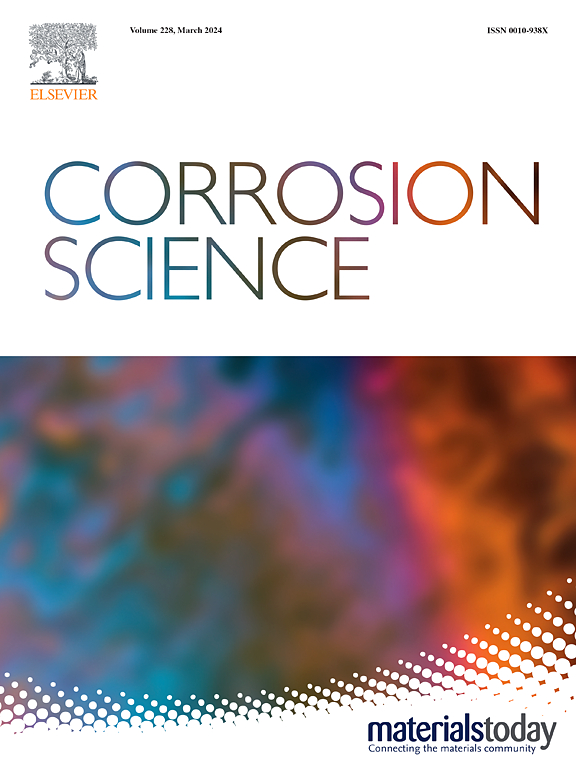Effect of rare earth oxide (Pr4O7) second phase and fine grain on the corrosion behavior of Ti-0.3Mo-0.8Ni
IF 7.4
1区 材料科学
Q1 MATERIALS SCIENCE, MULTIDISCIPLINARY
引用次数: 0
Abstract
The effect of grain refinement and second phase (Pr4O7) on the corrosion mechanism of the Ti-0.3Mo-0.8Ni was studied. The Pr4O7 nanophases are distributed in the α/β phase boundaries and the β phases (Pr ≤ 0.5 wt. %). Most of the Pr4O7 phases are distributed at the boundaries (Pr ≥ 1 wt. %). The Pr element refines the primary β grains. With the increment of Pr content, the passivation film becomes more stable, denser and thicker, which prolongs the decrease time of OCP, increases the corrosion potential and reduces the corrosion tendency. After the passivation film ruptures, the Pr4O7 aggravates the galvanic corrosion.
稀土氧化物 (Pr4O7) 第二相和细晶粒对 Ti-0.3Mo-0.8Ni 腐蚀行为的影响
研究了晶粒细化和第二相(Pr4O7)对钛-0.3钼-0.8镍腐蚀机理的影响。Pr4O7 纳米相分布在 α/β 相边界和 β 相中(Pr ≤ 0.5 wt.%)。大部分的 Pr4O7 相分布在边界(Pr ≥ 1 重量 %)。镨元素细化了原β晶粒。随着 Pr 含量的增加,钝化膜变得更稳定、更致密、更厚,从而延长了 OCP 的下降时间,提高了腐蚀电位,降低了腐蚀倾向。钝化膜破裂后,Pr4O7 会加剧电化学腐蚀。
本文章由计算机程序翻译,如有差异,请以英文原文为准。
求助全文
约1分钟内获得全文
求助全文
来源期刊

Corrosion Science
工程技术-材料科学:综合
CiteScore
13.60
自引率
18.10%
发文量
763
审稿时长
46 days
期刊介绍:
Corrosion occurrence and its practical control encompass a vast array of scientific knowledge. Corrosion Science endeavors to serve as the conduit for the exchange of ideas, developments, and research across all facets of this field, encompassing both metallic and non-metallic corrosion. The scope of this international journal is broad and inclusive. Published papers span from highly theoretical inquiries to essentially practical applications, covering diverse areas such as high-temperature oxidation, passivity, anodic oxidation, biochemical corrosion, stress corrosion cracking, and corrosion control mechanisms and methodologies.
This journal publishes original papers and critical reviews across the spectrum of pure and applied corrosion, material degradation, and surface science and engineering. It serves as a crucial link connecting metallurgists, materials scientists, and researchers investigating corrosion and degradation phenomena. Join us in advancing knowledge and understanding in the vital field of corrosion science.
 求助内容:
求助内容: 应助结果提醒方式:
应助结果提醒方式:


